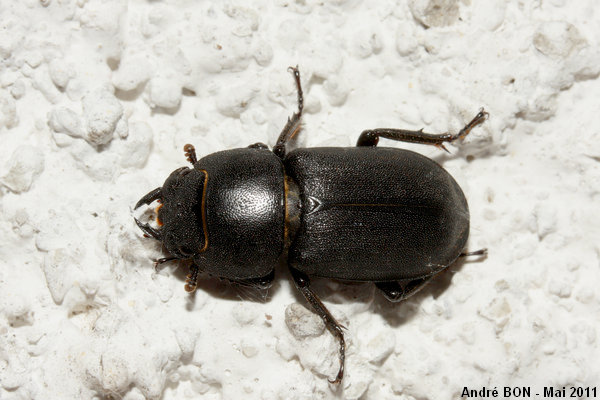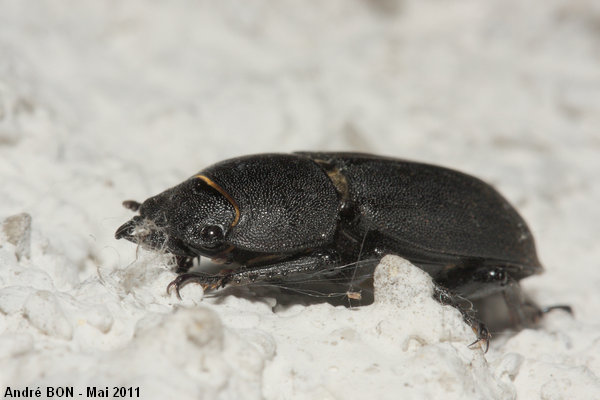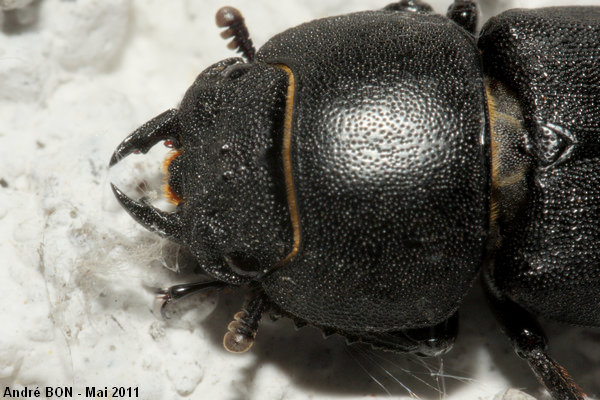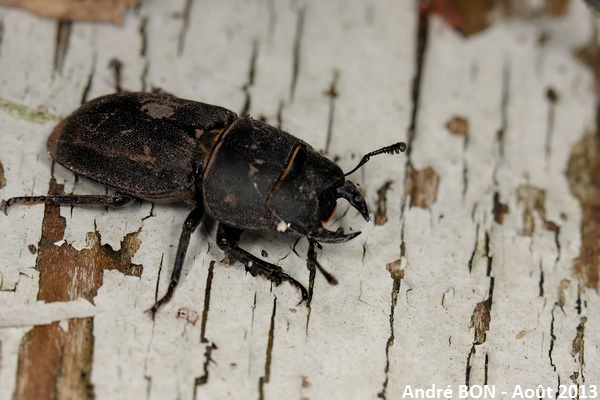



| Lesser Stag Beetle (Dorcus parallelipipedus (Linnaeus, 1758)) |




|
|
Scientific name: Dorcus parallelipipedus (Linnaeus, 1758) Common name: Lesser Stag Beetle French name: Petite biche Order: Coleoptera Family: Lucanidae Wingspan : 18 to 32 mm. Biotope: Forests, woodland edges, orchards, near old deciduous trees or rotting deciduous wood. Geographic area: Palaearctic region. There is a very similar species in North America: The Antelope Stage Beetle (Dorcus parallelus). Observation period : Mainly from June to September at twilight time, but you can observe adults all year long as they can live at least two years and maybe three. |
The Lesser Stag Beetle resembles the female Stag Beetle (Lucanus cervus) with a smaller size. You can easily tell it apart with its black colour. Stag beetles have more brownish elytra (pay attention that a shortly emerged Lesser Stag Beetle can also show a brownish colour before getting its perfectly black colour). The general body shape is oblong, almost rectangular. The elytra and the pronotum are punctuated. The antennae are elbowed and have comb-shaped tips. The front of the head shows two sharp and pointed mandibles. You recognize males by the presence of prominent knobs located at mid-length on the inner side of the mandibles. Females also show knobs at the same place but they are much smaller. The larvae, which are white with a brown head and a curved abdomen, grow during several years inside rotting deciduous wood. The adults observed during the day always move very slowly. They over winter in dead wood. |
| [To know more about the Lesser Stag Beetle] [Next picture] [Top] |

|
The fact that I am storing a heap of old wood logs in my garden, without touching to it as I think that Hedgehogs are over wintering below, may explain why I can observe Lesser Stag Beetles. The small size of the knob on the mandible indicates one female. |
| [To know more about the Lesser Stag Beetle] [Next picture] [Previous picture] [Top] |

|
This Lesser Stag Beetle helps me to clean the wall while slowly walking on rough cast. However my spider friends will soon deposit new silk threads again. |
| [To know more about the Lesser Stag Beetle] [Next picture] [Previous picture] [Top] |

|
Close-up view on the head. I only regret the lack of visibility of the fore legs and of the antennae. You will also notice that I have not yet found any miraculous flash light diffuser, but I am working on it … |
| [To know more about the Lesser Stag Beetle] [Previous picture] [Top] |

|
You can better see the legs and the antennae on this picture. The small size of the knob on the inner side of the mandibles indicate one female again. |